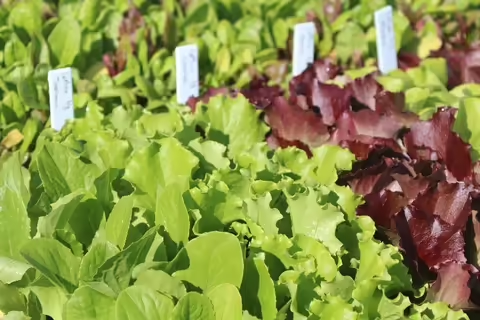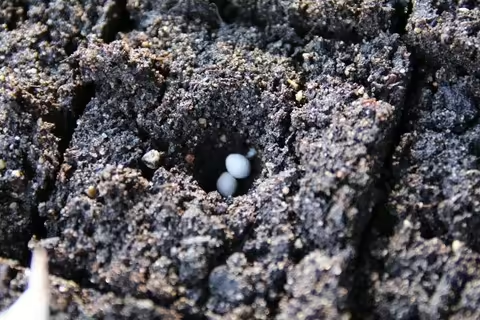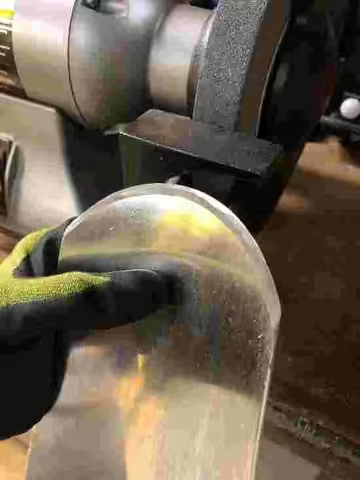Winter may still be with us, but preparation for spring is starting to move into high gear for me in terms of garden activities. One thing recently crossed off my February “to-do” list was seeding transplants of very hardy vegetables and herbs like broccoli and parsley. Seeding the first week of February gives me enough time to grow good-sized transplants for planting in their preferred window of 4-6 weeks before the last spring frost. How did I arrive at the first week of February as my transplant seeding date? Well, using weather data from the Illinois State Water Survey, I know that the earliest ever recorded date for the “last 32°F spring freeze” in my area is March 20, and the latest is April 29. I could count back from either of these dates, but since I don’t employ frost protection devices (row covers, tunnels, etc,) and am not that much of a gambler, the earlier date seems too risky for my garden location, yet the later date seems too conservative. I chose the median date of April 11 to do my countback. I counted back 4-6 weeks to set the recommended plant date window for very hardy transplants, which in this case is March 7 to March 21. This is also the window to direct seed cold-hardy vegetables like peas and spinach, and to plant crowns of asparagus and potato “seed’ pieces. Still being a bit on the conservative side, I chose the middle week of March 14 as my target planting date, leaving room on either end to make changes, depending on weather conditions and growth of the transplants.
Now, if my plan was to just purchase transplants, all I would need to do is buy the transplants about a week prior to my anticipated plant date, giving me the needed time to harden-off the transplants before planting, especially if they came directly out of a greenhouse and are on the succulent side. But if I plan to grow the transplants myself, there is still some calculating to be done. To set my seeding date for very cold hardy transplants, I took my target plant date of March 14 and counted back another 6 weeks, which turned out to be the first week of February, thus why this item is crossed off my “to-do” list. Done!
The majority of transplants take a good 4-6 weeks to grow a sufficient root system for planting, so being conservative gives you a little wiggle room to plant a bit early or hold on to them if planting conditions are not optimal. Using the same method, I plan to seed frost tolerant transplants like cauliflower, the week of Valentine’s Day; tender transplants like tomato, the week of March 7; and warm loving transplants like peppers. a week later.
One thing I and others have learned, cole crop transplants are sensitive to interruptions in growth. If you forget to water them and allow them to dry out, or do something else to stress them, those transplant may not continue to grow or ever reach their full potential. Make sure to maintain consistent moisture without saturating the soil media and maintain proper fertility throughout its entire life. Another group of somewhat persnickety vegetables as transplants are the vine crops and the Chinese cabbage group. Both have a tendency to not appreciate being pulled from a transplant tray, so it is common practice to use peat pots, or a much larger cell size or soil block to reduce damage or transplant shock to sensitive roots. Tomatoes on the other hand are just the opposite, they fall in a group of plants that actually seem to like being disturbed by the sizing up process, so tomatoes tend to do well as small or large transplants.
This is also the time of year when I start sharpening shovels, hoes, pruners and loppers in preparation for late dormant pruning and spring planting. Pruners and loppers probably seem obvious, shovels and hoes maybe less so. But from years of experience, I can tell you weeds succumb much more readily to a sharp hoe, and the same with digging and dividing perennials with a sharp shovel. All of these tools are single beveled, meaning you only sharpen one side. Most new shovels and hoes come with a grounded bevel, but usually not so much that the edge is sharp to the touch, meaning a new shovel or hoe may take a bit more time and effort to sharpen the edge the first time, compared to an edge that has been sharpened before. When sharpening, use the bevel angle already set on the cutting surface. If it is so dull the bevel is no longer apparent, a 45° angle would be appropriate. For my pruners and loppers, I tend to use a sharpening stone, similar to what you would use for a knife. For a bigger job like a shovel or hoe, I use a benchtop grinder or a mill bastard (hand file).


